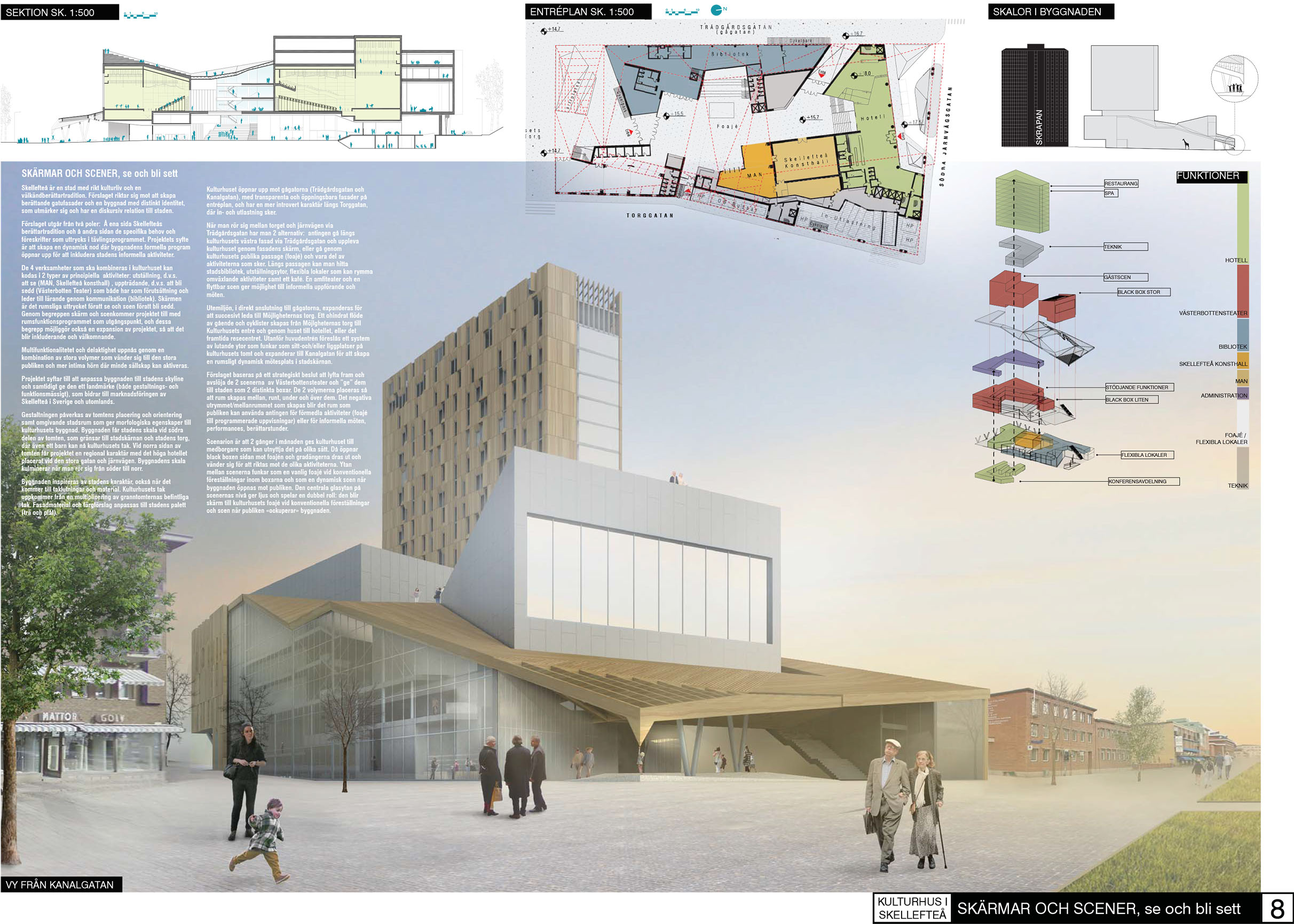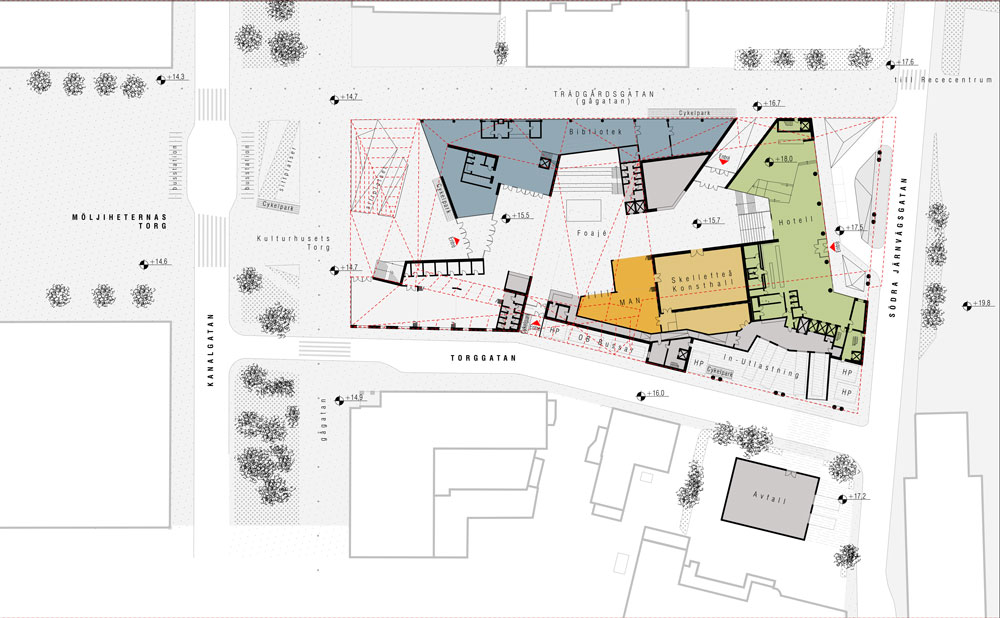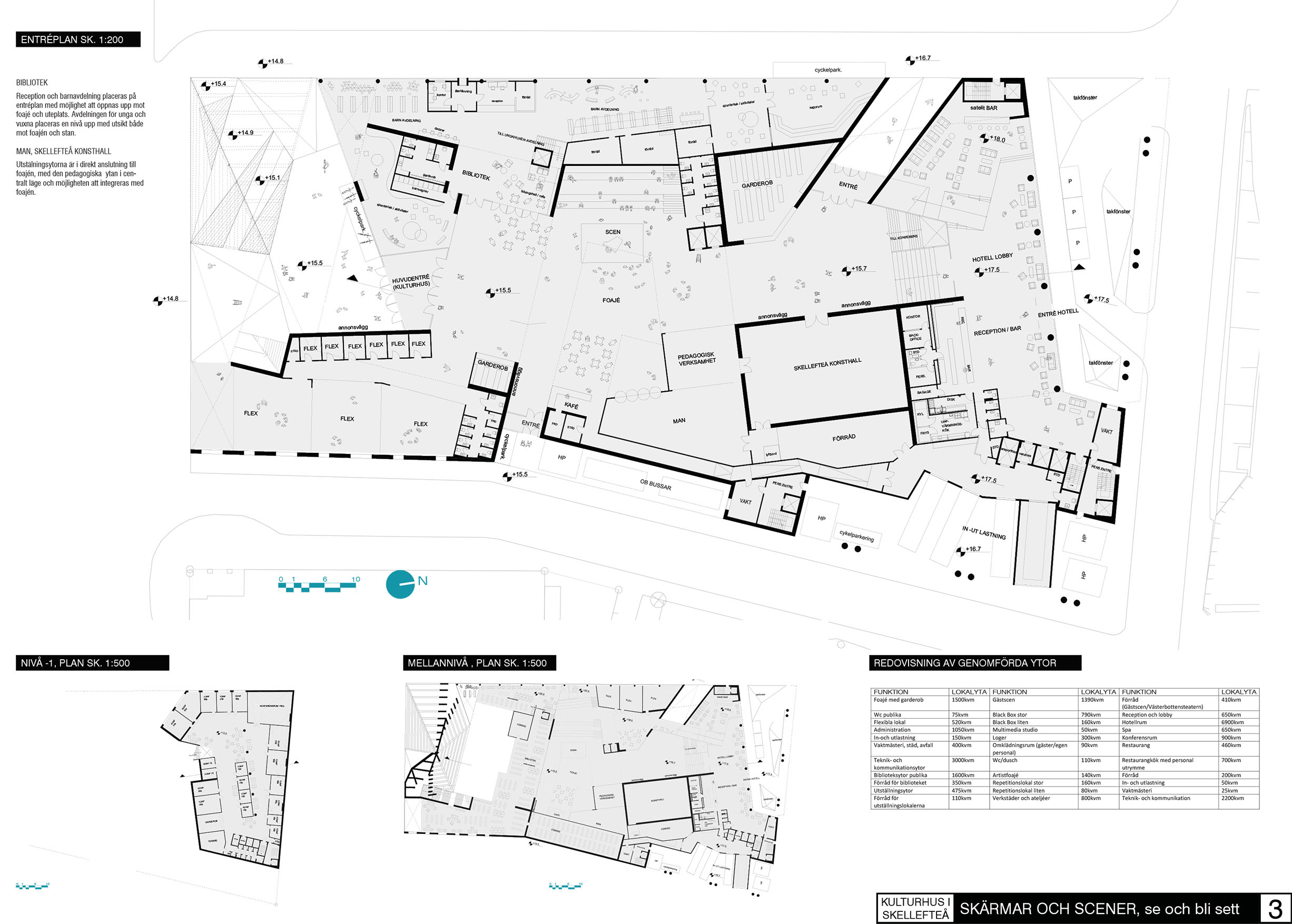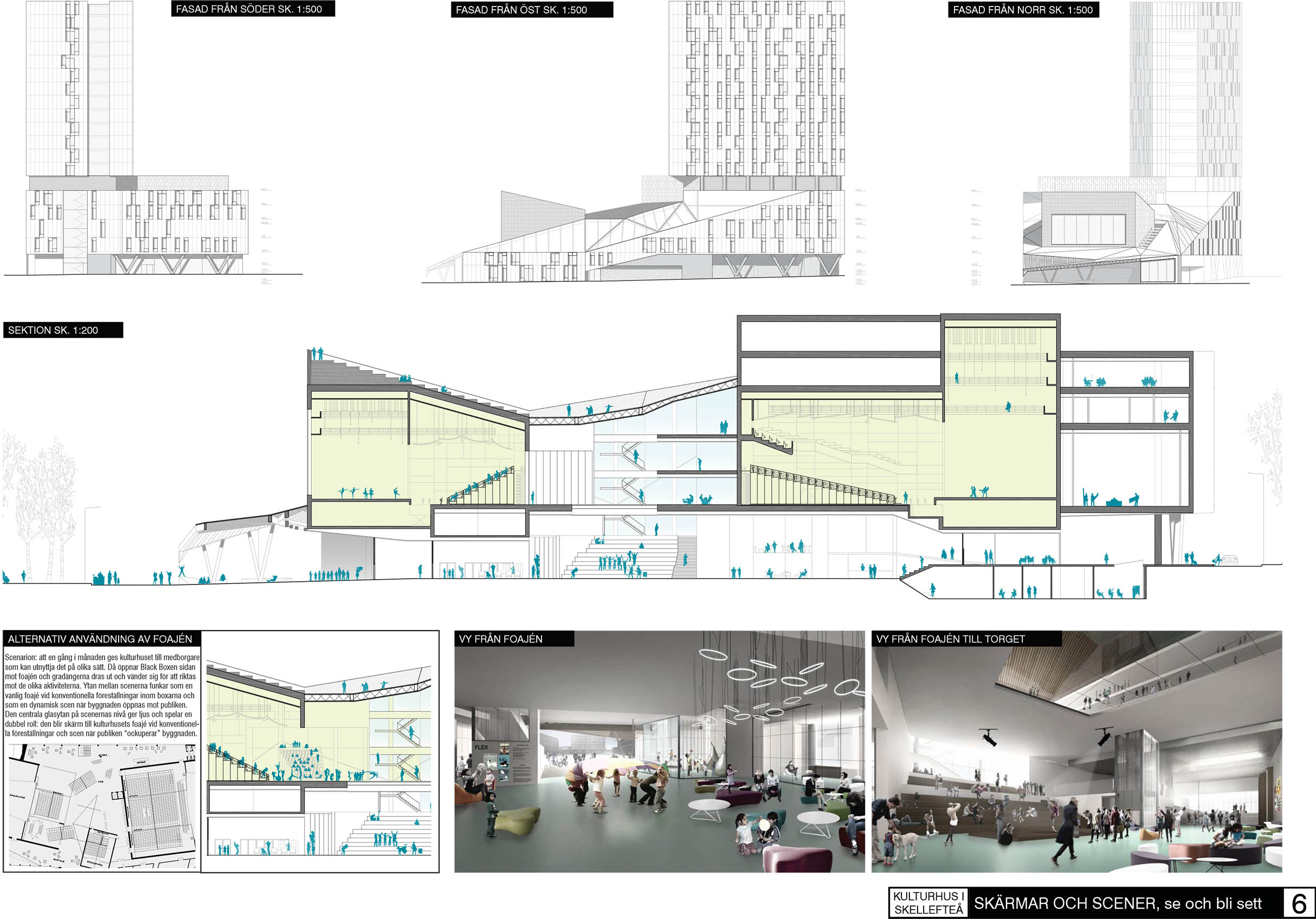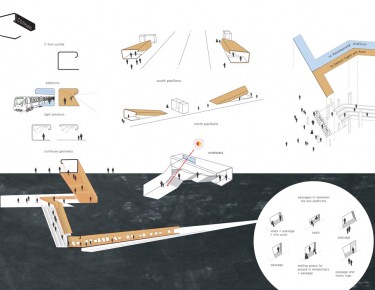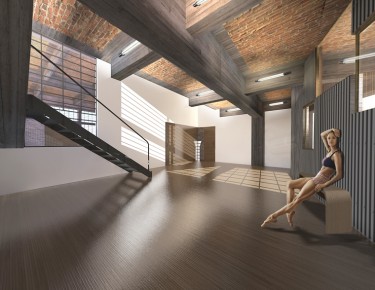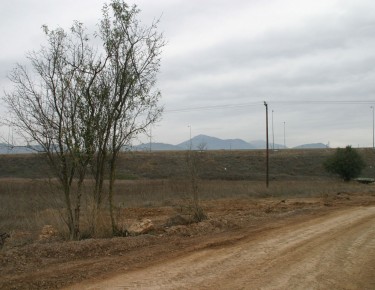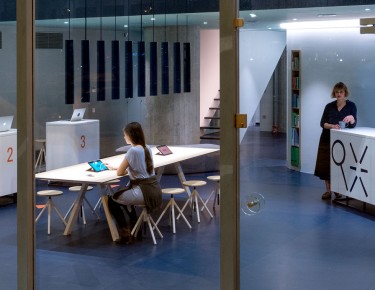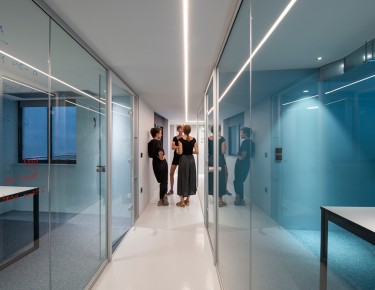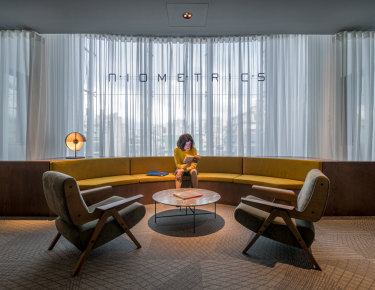“Skärmar och scener – se och bli sett” / Screens and scenes – see and be seen
Architectural competition for cultural center and hotel in Skellefteå, Sweden.
Maria Tsigara, Marianna Xyntarki, Leda Voutsina, Vasileios Ntovros, Studio k45: Giorgos Tzorbatzidis, Myrsini Glezou, Maria Damianou.
collaborators: Nikos Argyrou, Spyros Kosyvas, Dimos Moysiadis, Chrysanthin Vathi, Chrysokona Mavrou, Antigoni Karaiskou, Artemis Papadopoulou, Thanasis Vagias, Dimitris Theodoropoulos, Ilektra Kefaloniti.
———————————————————————————————————————————————————————————————————-
Skellefteå is a city with a rich cultural life and a storytelling tradition. The proposal is aimed at creating “storytelling” street facades and a building with a distinct identity, that stands out and has a discursive relationship with the city. The proposal is based on two poles: On one side Skellefteå storytelling tradition, and on the other hand the specific needs and regulations as expressed in the competition programme. The project aims to create a dynamic node where the building’s formal programme opens up to include the city’s informal activities.
The 4 activities/public bodies that are combined in the Cultural House can be encoded in two types of principal activities: exhibition, that is to “see”(MAN museum, Skellefteå Art Hall)and performance, ie to “become seen” (Västerbotten Theatre). Both have as pre-condition /and lead to learning through communication (Västerbottens library). The screen is the spatial expression of “To see” and the stage of “to be seen”. The concept of screen and sceen, are the key to approach the programme and simultaneously make possible the expansion of the project, beyond the programme so that it becomes inclusive and welcoming.
Multifunctionality and participation is achieved through a combination of large volumes that can welcome a large crowd and more intimate corners. The project aims to adapt the building to the city’s skyline while giving it a landmark (both morphologically and functionally), which contributes to city marketing of Skelleftea in Sweden and abroad.
The design takes into consideration the position of the plot and orientation and surrounding urban spaces that provide morphological characteristics of typical house buildings in the area. The building is adjusted to the scale of the city at the southern part of the plot, adjacent to the city center and the city square, where even a child can reach the roof of Kulturhuset. At the north side of the plot, the project takes a regional character with the high hotel located at the main street and the railway. The building’s scale culminates when one moves from south to north.
The building is inspired by the character of the city, also in relation to roof inclinations and materials. The complex roof results from a multiplication of the neighboring existing roofs. Facade material and color suggestions are adapted to the city’s palette (Wood and metal). The building opens onto the pedestrian area (Tradgardsgatan and Kanalgatan), with transparent and open facades on the ground floor, and has a more introverted character along Torggatan, where loading and unloading takes place.
When moving between the square and the railway through Tradgardsgatan street one has two options: either to walk along Tradgardsgatan and experience Cultural House through the facade screen, or go through the Cultural House’s public passage (foyer) and be part of the activities that take place inside. Along the passageway can be found the city library, exhibition space, flexible spaces that can accommodate various activities as well as a coffee shop. An amphitheater and a portable stage provides the opportunity for informal conduct and encounters.
The outdoor environment is directly adjacent to the pedestrian zone. A route for pedestrians and cyclists is created from the square to Kulturhuset’s entrance and through the building to the hotel, or the future travel center. Outside the main entrance, a system of inclined surfaces that work as seating and / or resting places of the Culture house expand to Kanalgatan to create a spatially dynamic meeting place in the city center.
The proposal is based on a strategic decision to emphasize and reveal the two scenes of Västerbotten Theatre and “give” them to the city as two distinct boxes. The two volumes are placed in such a way that space is created between, around, above and below them. The “negative” space created becomes the place that visitors can use either to follow various activities (foyer for the scheduled activities) or for informal meetings, performances, storytelling.
The scenario is that two times a month the culture house is open to citizens who can utilize it in various ways. The black boxe’s internal side opens toward the foyer and the seats are pulled out and aimed to accomodate the different things to do. The area between the two scenes works as a regular lobby in conventional performances and as a dynamic scene when the building is opened to the audience.
The central glass surface on the level of the scenes lets the sunlight inside and plays a double role: it becomes a screen of Kulturhuset’s foyer during programmed activities and a scene when the public “occupies” the building.
———————————————————————————————————————————————————————————————————–
Skellefteå är en stad med rikt kulturliv och envälkändberättartradition. Förslaget riktar sig mot att skapa berättande gatufasader och en byggnad med distinkt identitet, som utmärker sig och har en diskursiv relation till staden.Förslaget utgår från två poler: Å ena sida Skellefteås berättartradition och å andra sidan de specifika behov och föreskrifter som uttrycks i tävlingsprogrammet. Projektets syfte är att skapa en dynamisk nod där byggnadens formella program öppnar upp för att inkludera stadens informella aktiviteter.
De 4 verksamheter som ska kombineras i kulturhuset kan kodas i 2 typer av principiella aktiviteter: utställning, d.v.s. att se (MAN, Skellefteå konsthall) , uppträdande, d.v.s. att bli sedd (Västerbotten Teater) som både har som förutsättning och leder till lärande genom kommunikation (bibliotek). Skärmen är det rumsliga uttrycket föratt se och scen föratt bli sedd. Genom begreppen skärm och scenkommer projektet till med rumsfunktionsprogrammet som utgångspunkt, och dessa begrepp möjliggör också en expansion av projektet, så att det blir inkluderande och välkomnande. Multifunktionalitetet och delaktighet uppnås genom en kombination av stora volymer som vänder sig till den stora publiken och mer intima hörn där minde sällskap kan aktiveras.
Projektet syftar till att anpassa byggnaden till stadens skyline och samtidigt ge den ett landmärke (både gestaltnings- och funktionsmässigt), som bidrar till marknadsföringen av Skellefteå i Sverige och utomlands. Gestaltningen påverkas av tomtens placering och orientering samt omgivande stadsrum som ger morfologiska egenskaper till kulturhusets byggnad. Byggnaden får stadens skala vid södra delen av tomten, som gränsar till stadskärnan och stadens torg, där även ett barn kan nå kulturhusets tak. Vid norra sidan av tomten får projektet en regional karaktär med det höga hotellet placerat vid den stora gatan och järnvägen. Byggnadens skala kulminerar när man rör sig från söder till norr. Byggnaden inspireras av stadens karaktär, också när det kommer till taklutningar och material. Kulturhusets tak uppkommer från en multiplicering av granntomternas befintliga tak. Fasadmaterial och färgförslag anpassas till stadens palett (trä och plåt). Kulturhuset öppnar upp mot gågatorna (Trädgårdsgatan och Kanalgatan), med transparenta och öppningsbara fasader på entréplan, och har en mer introvert karaktär längs Torggatan, där in- och utlastning sker. När man rör sig mellan torget och järnvägen via Trädgårdsgatan har man 2 alternativ: antingen gå längs kulturhusets västra fasad via Trädgårdsgatan och uppleva kulturhuset genom fasadens skärm, eller gå genom kulturhusets publika passage (foajé) och vara del av aktiviteterna som sker. Längs passagen kan man hitta stadsbibliotek, utställningsytor, flexibla lokaler som kan rymma omväxlande aktiviteter samt ett kafé. En amfiteater och en flyttbar scen ger möjlighet till informella uppförande och möten. Utemiljön, i direkt anslutning till gågatorna, expanderas för att succesivt leda till Möjligheternas torg. Ett ohindrat flöde av gående och cyklister skapas från Möjlgheternas torg till Kulturhusets entré och genom huset till hotellet, eller det framtida resecentret. Utanför huvudentrén föreslås ett system av lutande ytor som funkar som sitt-och/eller liggplatser på kulturhusets tomt och expanderar till Kanalgatan för att skapa en rumsligt dynamisk mötesplats i stadskärnan. Förslaget baseras på ett strategiskt beslut att lyfta fram och avslöja de 2 scenerna av Västerbottensteater och ”ge” dem till staden som 2 distinkta boxar. De 2 volymerna placeras så att rum skapas mellan, runt, under och över dem. Det negativa utrymmet/mellanrummet som skapas blir det rum som publiken kan använda antingen för förmedla aktiviteter (foajé till programmerade uppvisningar) eller för informella möten, performances, berättarstunder.
Scenarion är att 2 gånger i månaden ges kulturhuset till medborgare som kan utnyttja det på olika sätt. Då öppnar black boxen sidan mot foajén och gradängerna dras ut och vänder sig för att riktas mot de olika aktiviteterna. Ytan mellan scenerna funkar som en vanlig foajé vid konventionella föreställningar inom boxarna och som en dynamisk scen när byggnaden öppnas mot publiken. Den centrala glasytan på scenernas nivå ger ljus och spelar en dubbel roll: den blir skärm till kulturhusets foajé vid konventionella föreställningar och scen när publiken «ockuperar» byggnaden.

